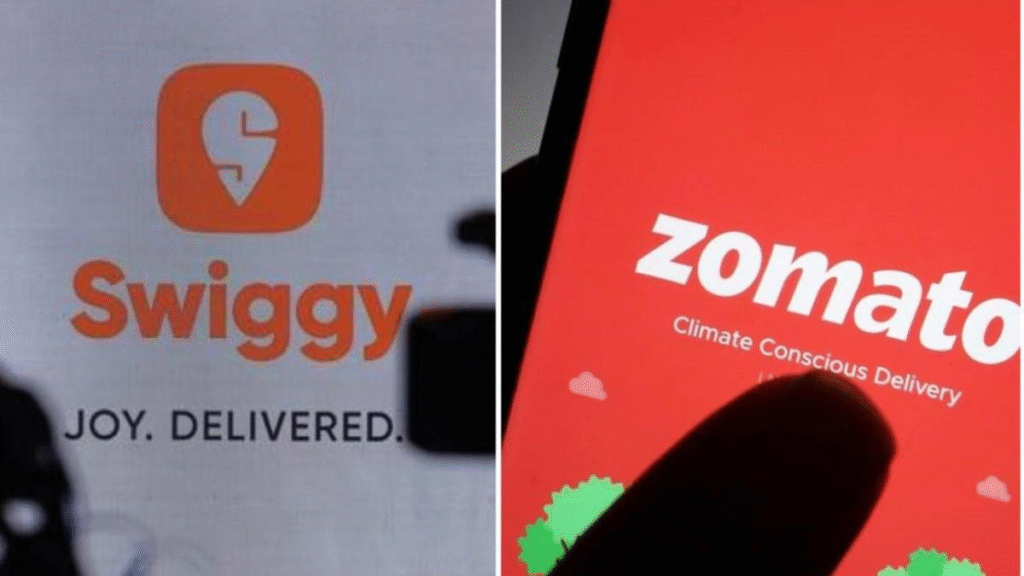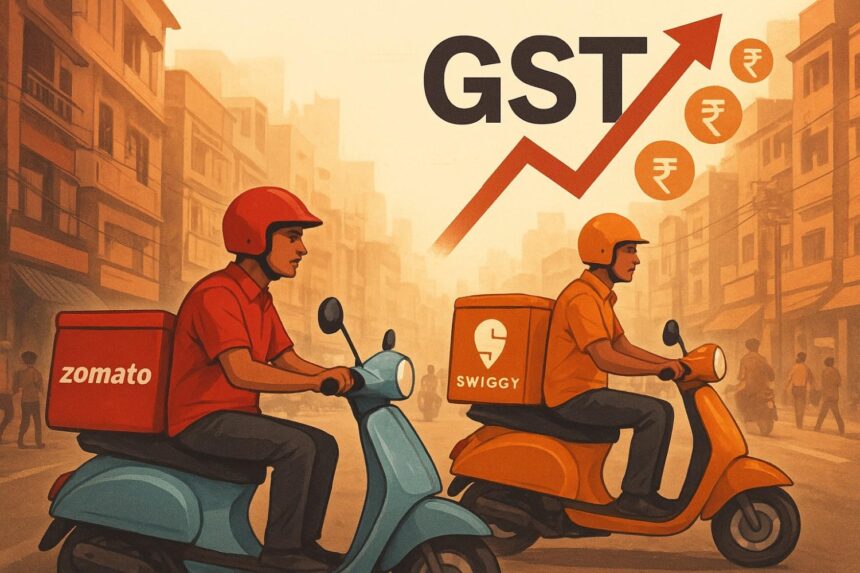India’s leading food delivery platforms, Zomato and Swiggy, are grappling with an additional Goods and Services Tax (GST) liability estimated between ₹180-200 crore annually. This significant tax burden follows a government clarification that delivery charges routed through these platforms are liable for an 18% GST under Section 9(5) of the CGST Act. As a response, both companies are exploring cost-cutting measures, including reducing payments to delivery workers, while also considering passing some costs onto consumers.
The GST Council’s latest ruling has brought delivery fees squarely under tax compliance obligations for digital platforms, marking a shift from previous ambiguity where such fees were treated as ancillary or outside direct tax liability. Legal experts say this decision aligns food delivery with ride-hailing and other aggregator services, where platforms must collect and remit GST on behalf of service providers.

Executives from Zomato and Swiggy have acknowledged the potential financial strain, with sources revealing plans to partly offset the GST outgo by adjusting delivery partner payouts. “This will likely reduce earnings for delivery personnel in the short term,” a senior executive from Zomato said, while another confirmed similar intentions at Swiggy. Discussions around introducing an additional levy on customers are also underway but remain undecided.
This tax development compounds existing fiscal pressures on these platforms amid slowing growth and rising operational costs. Notably, Zomato recently received a GST demand notice for ₹803 crore relating to unpaid taxes from previous years, while Swiggy faced a pre-demand for ₹327 crore. Industry analysts warn margins could be squeezed further, leading to price hikes and bargaining challenges with gig workers.
Despite these hurdles, both firms continue to dominate the Indian food delivery market and are working on managing compliance with minimal disruption. The government’s move aims to increase tax transparency and plug revenue leakages in India’s booming digital economy, but the impact on frontline delivery workers and consumer prices is yet to fully unfold.






